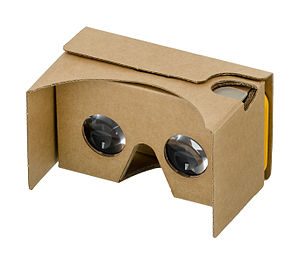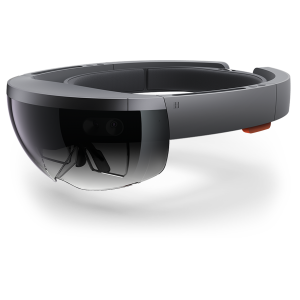Google Cardboard (VR)

The Google Cardboard is a VR head mount set that was first developed and released by Google in June 2014. Being named after the cardboard material the device was mainly made from, the Google Cardboard was a simple and cheap device made to be used with smartphones. Users can choose to either buy a pre-manufactured one from Google or build their own viewer using their own components and instructions freely available from Google’s website.
Pros:
- Extremely cheap in comparison to the other VR headsets like the Oculus Rift or HTC Vive
- Customizable by users or developers due to blueprints and specifications being publicly available
- Enables VR programs to be run and used by phones which is not quite possible with the aforementioned devices
- Easy and simple interaction design – a single button to interact with VR apps, removing the need to master the usage of other clunky controllers
Cons:
- Restricted compatibility with larger devices (like laptops, smart tablets or personal computers) – which by extension, limiting its programs’ potential performance (laptops can accommodate much higher hardware specifications than that of a smart phone)
- Limited interactivity – users can only interact with VR apps through a single button and will be unable to simulate actions (like hand pressure or movement) that is only possible through a more sophisticated controller.
- Lack of integrated audio playback – users must use their own audio devices or use their smartphone speakers
- Extremely uncomfortable to use if you wear spectacles without customization
Microsoft HoloLens (MR)

The Microsoft Hololens is a pair of MR smart-glasses developed and released by Microsoft in March 2016. It is one of the first few devices that runs Windows Mixed Reality Platform under the Windows 10 OS. The Microsoft Hololens can be seen as a “computer in your glasses” – akin to that those cool tech glasses you seen in films like James Bond and Kingsman series alike. It supports a plethora of existing programs and applications, from conventional Windows 10 programs to that of 3D holographic applications.
Pros:
- The portability and wearability of a powerful computer in a form of a pair of glasses is indeed a compelling point to buy this product
- Holographic interaction – imagine being able to use your computer like how Tony Stark does in Iron Man will be extremely awesome!
- Supports both conventional 2D programs and 3D holographic apps is a plus point
Cons:
- Short battery life (especially due to its high performance demands)
- Hefty price tag of $3000 (USD) – almost equivalent to that of a high-end computer or laptop
- Still quite uncomfortable to use this device with large glasses and headgear
